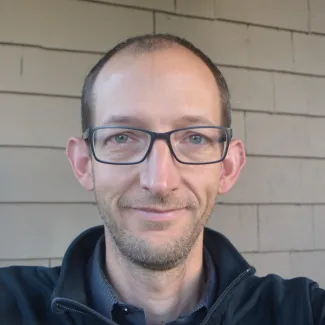Dafflon, Baptiste, et al. “A Distributed Temperature Profiling System for Vertically and Laterally Dense Acquisition of Soil and Snow Temperature”. The Cryosphere, vol. 16, no. 2, 2022, pp. 719-36, https://doi.org/10.5194/tc-16-719-2022.
Baptiste Dafflon
First name
Baptiste
Last name
Dafflon
Identity Disambiguation
Affiliation(s)
Open Researcher and Contributor ID (ORCID)
Web of Science
Project Leadership Role(s)
- Science Team Leads
- Modeling & Scale Integration
Project Leadership Title(s)
- Science Team Leads
- Modeling & Scale Integration
2022
2021
2020
2019
2018
- Bisht, Gautam, et al. “Impacts of Microtopographic Snow Redistribution and Lateral Subsurface Processes on Hydrologic and Thermal States in an Arctic Polygonal Ground Ecosystem: A Case Study Using ELM-3D v1.0”. Geoscientific Model Development, vol. 11, no. 1, 2018, pp. 61-76, https://doi.org/https://doi.org/10.5194/gmd-11-61-2018.
- Tran, Anh Phuong, et al. “Spatial and Temporal Variations of Thaw Layer Thickness and Its Controlling Factors Identified Using Time-Lapse Electrical Resistivity Tomography and Hydro-Thermal Modeling”. Journal of Hydrology, vol. 561, 2018, pp. 751-63, https://doi.org/10.1016/j.jhydrol.2018.04.028.
2017
- Dafflon, Baptiste, et al. “Coincident Aboveground and Belowground Autonomous Monitoring to Quantify Covariability in Permafrost, Soil, and Vegetation Properties in Arctic Tundra”. Journal of Geophysical Research: Biogeosciences, vol. 122, no. 6, 2017, pp. 1321-42, https://doi.org/10.1002/2016JG003724.
- Léger, Emmanuel, et al. “Quantification of Arctic Soil and Permafrost Properties Using Ground-Penetrating Radar and Electrical Resistivity Tomography Datasets”. IEEE Journal of Selected Topics in Applied Earth Observations and Remote Sensing, vol. 10, no. 10, 2017, pp. 4348-59, https://doi.org/10.1109/JSTARS.2017.2694447.
2016
2015
- Wainwright, Haruko M., et al. “Identifying Multiscale Zonation and Assessing the Relative Importance of Polygon Geomorphology on Carbon Fluxes in an Arctic Tundra Ecosystem”. Journal of Geophysical Research: Biogeosciences, vol. 120, no. 4, 2015, pp. 788-0, https://doi.org/10.1002/2014JG002799.


